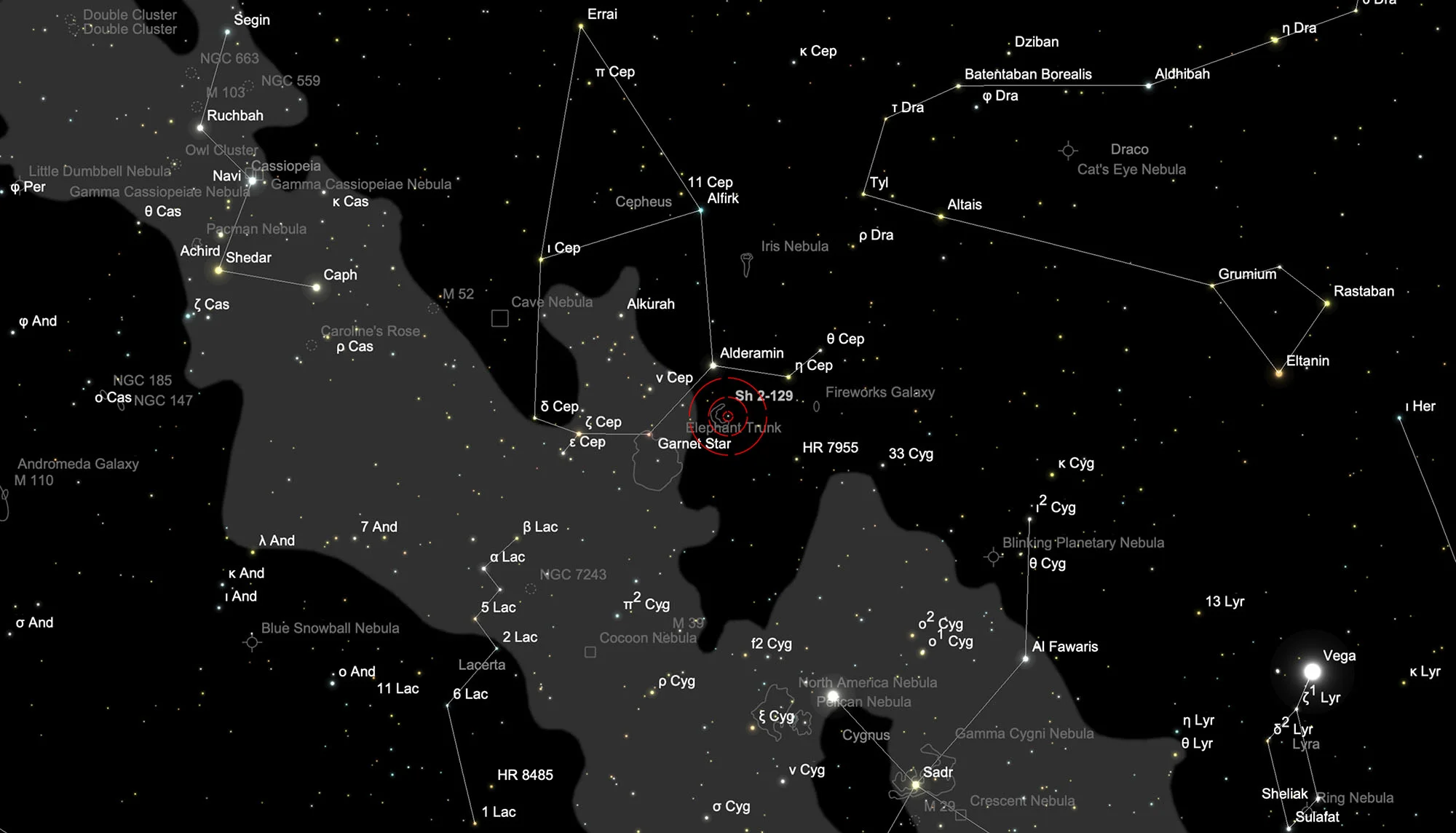Flying Bat Nebula (Sh 2-129) & Squid Nebula (Ou4)
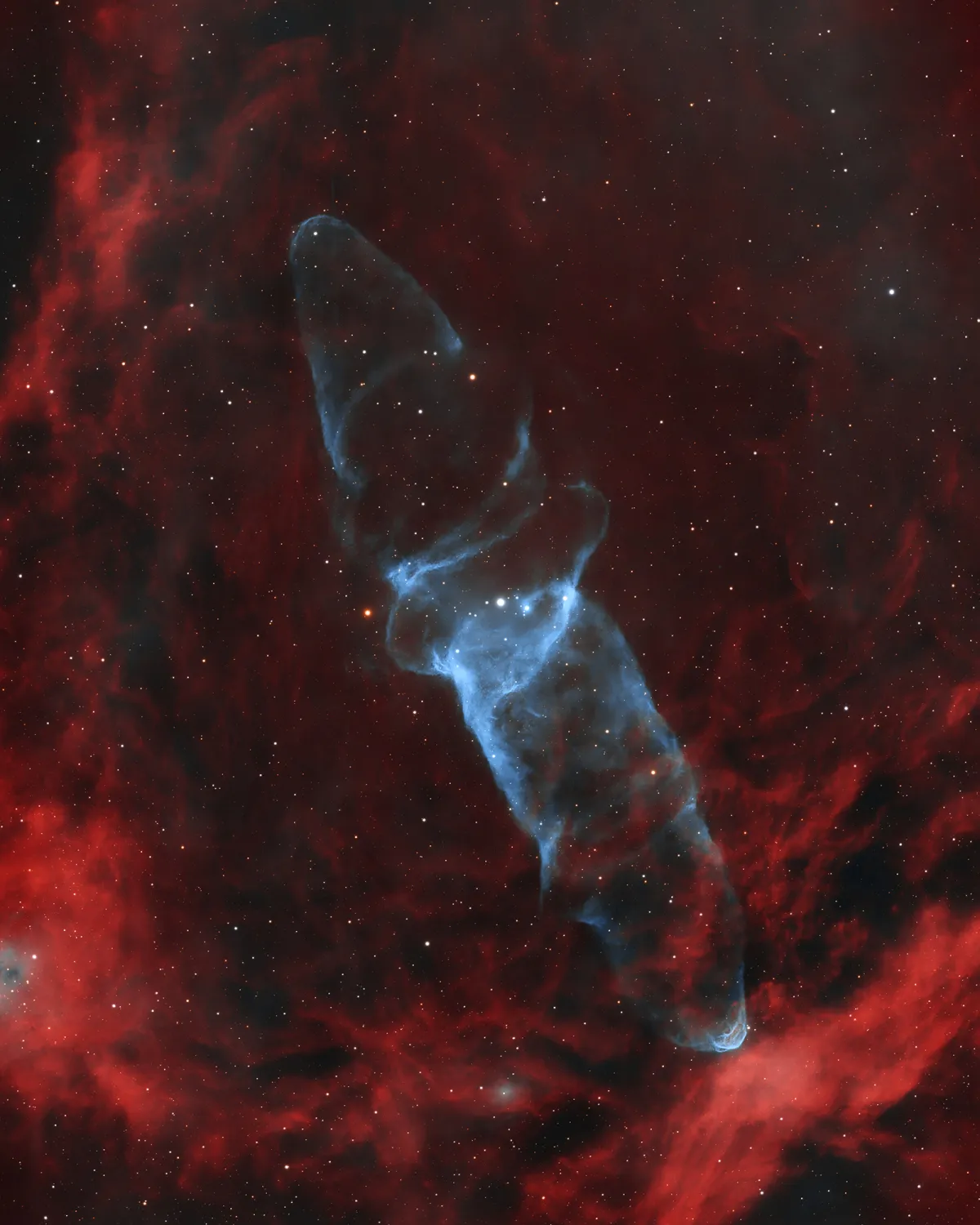
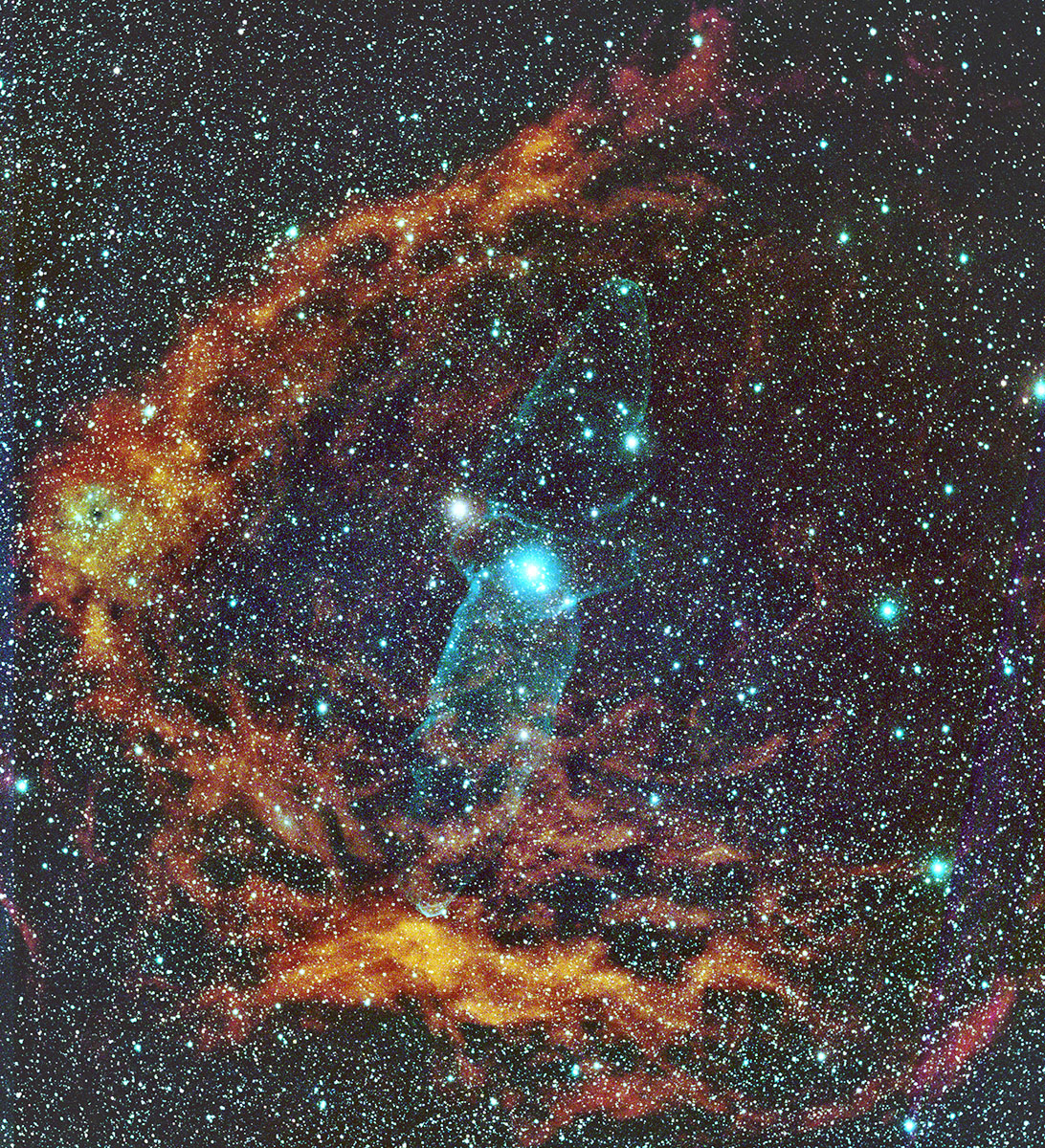
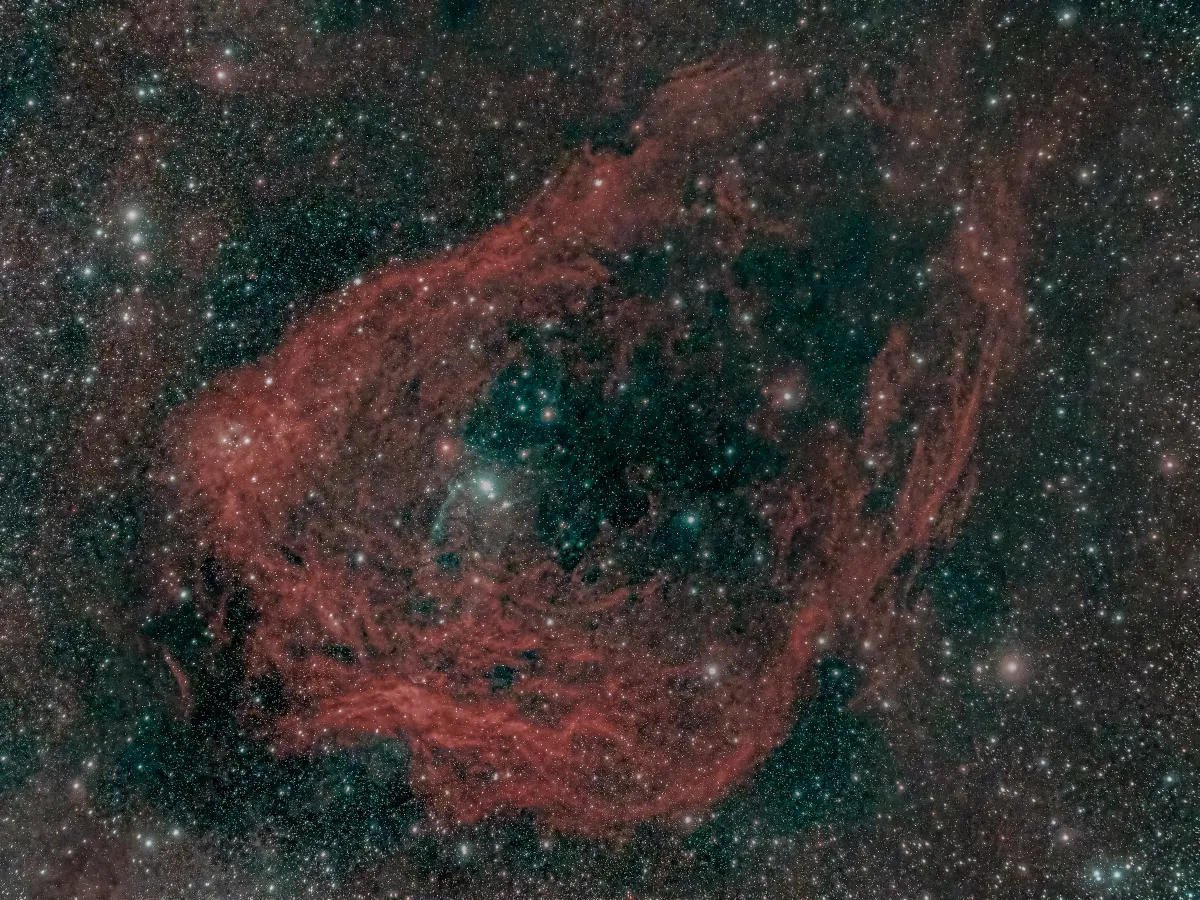
History
In the late 1950-ies the American astronomer Stewart Sharpless discovered the large nebula Sh 2-129 on the 48 inch Schmidt telescope photo plates of the «Palomar Observatory Sky Survey». In 1959 he published his discovery together with 313 H-II regions in a catalogue. He classified it as of irregular shape with 140 arc minutes diameter some amorphous to filamentary structure with intermediate brightness and noted «Part of I Cep association.» [310] The nebula later became known as «Flying Bat Nebula».
In May 2011 the French amateur astrophotographer Nicolas Outters decided to take a picture of Sh 2-129. He took several pictures, each with 30 minutes exposure in May and June using his FSQ-106 refractor and SBIG 6303e CCD camera and Hα, [S II] and [O III] filters, total 12.5 hours. After combining the images taken through the O-III filter he discovered a large structure that seemed to have no coherence with the nebula Sh 2-129. He called it «Le Calamar». The rare pictures of Sh 2-129 on the net he found did not show such a structure. He contacted the French astrophysicist Agnès Acker which did precise studies of this strange object and confirmed an important presence of Oxygen III. The nebula was given the designation Ou4, for the fourth nebula discovered by Outters. [508, 509]
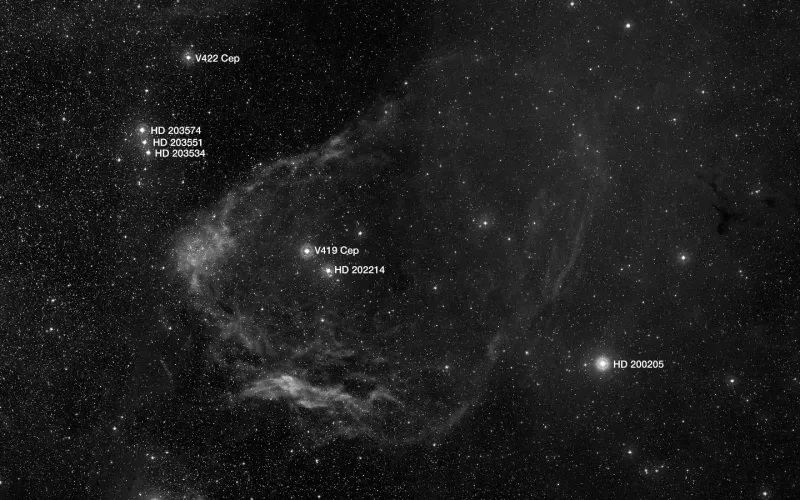
Physical Properties
The morphology of Ou4 with a central, disc-like structure and two elongated opposite lobes looks like a bipolar planetary nebula. The spectrum is dominated by the green [O III] lines, whose total intensity is about 20 times larger than that of Hβ. Such a high excitation class is coherent with a very hot central star. The very bright star lying in the central part of the nebula is HD 202214 (HR 8119), a triple system. It is of spectral type B0 II or B0 V. The star is thought to belong to the Cepheus OB2 massive stars association, the Sh2–129 H II region, or the Trumpler 37 cluster. It is variable (V=5.51 to 5.57). [509]
The apparent position of Ou4 and the properties leads to conclusion that Ou4 is located inside the Sh 2-129 H II region, suggesting that it was launched some 90'000 years ago by HR 8119. However, it cannot be rule out the alternative possibility that Ou4 is a bipolar planetary nebula or the result of an eruptive event on a massive AGB or post–AGB star not yet identified. [510]
Finder Chart
Sh2-155 is located in the southeastern part of the constellation Cepheus. It is circumpolar for central Europe. On 8 August it is in opposition to the Sun and culminates at local midnight. The best observing time is April to January.
